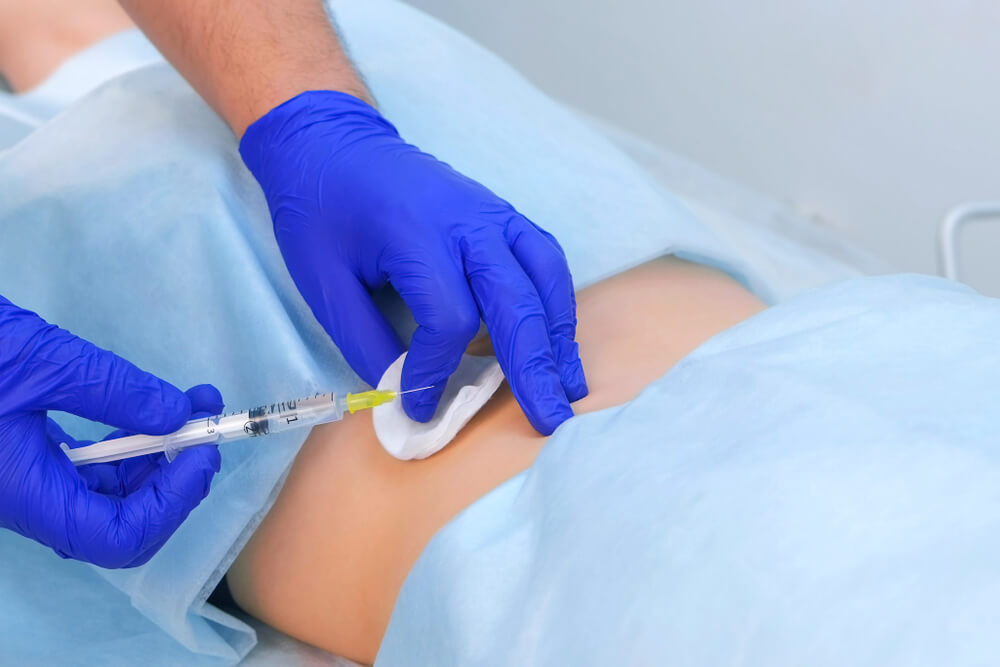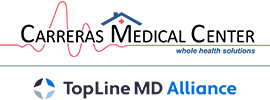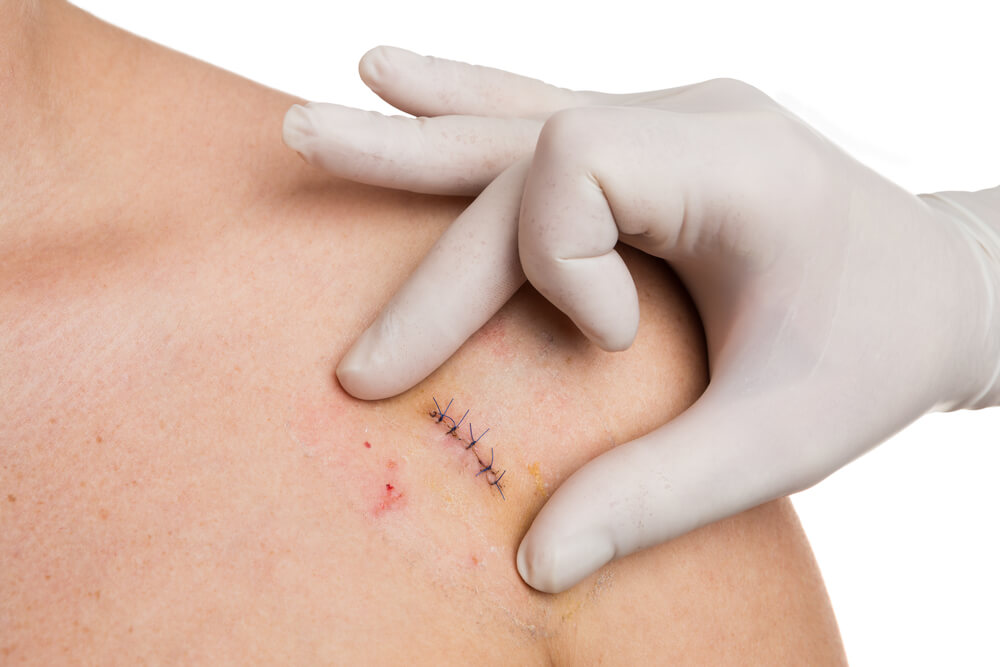If I’ve told you that you need to have Mohs surgery for melanoma, basal skin carcinoma, or squamous skin carcinoma removal, you’re likely wondering what to expect for your upcoming procedure date.
If you’re like most of my Hialeah patients, you’re probably wondering:
- What you’ll need to do to prepare for the upcoming procedure.
- What the outpatient procedure will be like.
- Whether it will be painful or not,
- What your Mohs surgery scar will look like.
- Wondering what Mohs surgery aftercare tips you’ll need to follow.
- What your Mohs surgery recovery timeline will look like.
- How long you’ll need to wait to exercise after Mohs surgery.
Don’t worry. As your physician, I’m here to help answer these questions for you and make you as comfortable as possible for your upcoming procedure.
If you have any specific questions about your upcoming procedure, please call my office at (305) 614-3677 so I can answer those questions personally.
Preparing for Your Upcoming Mohs Surgery for Melanoma and Other Types of Skin Cancer
Mohs surgery for Melanoma and other surface-level cancers on the body is a minimally-invasive, outpatient treatment option. These types of cancers can occur anywhere on your body, and commonly occur on the face and nose.
To prepare for this procedure, you’ll need to abstain from the following medications for seven days before your appointment:
- Blood thinners (so long as they aren’t prescribed because you have cardiovascular disease).
- Aspirin.
- Non-Steroid Anti-inflammatory Drugs (NSAIDs), including Ibuprofen.
Additionally, if you have a heart murmur or any artificial joints – such as a knee replacement or hip replacement – we’ll discuss whether or not you should take a preoperative antibiotic as a precautionary measure to avoid infection.
Because you’ll only be receiving a local anesthetic applied directly to your treatment area, there’s no need for you to fast the day of your appointment. I actually recommend that you have a healthy breakfast before coming in for your treatment because there’s no way for me to predict how long it will take to remove all your cancerous cells.
During your Mohs surgery for melanoma, basal skin carcinoma, or squamous skin carcinoma skin cancer, I will:
- Inject your treatment area with a local anesthetic. Most patients report this injection is the most uncomfortable part of the procedure, and say that the rest of this operation is painless.
- Gently remove a layer of tissue at your cancer site.
- Review the removed tissue at an on-site laboratory using a microscope to check for cancerous cells.
This procedure is repeated until I see a tissue sample under the microscope with no cancerous cells. Most patients only need one to two layers of tissue removed, though individual procedures will vary depending on their unique cases and presentations of melanoma, and other cancerous cells found on the skin.
While my number one goal of this procedure is to remove all your cancerous tissue, my second goal is to provide you with as aesthetically appealing Mohs surgery scar as possible. This is especially true when it comes to healing after Mohs surgery on the face. Many times I’m able to leave the resulting wound open to heal on its own. If multiple layers of cells were removed or your nose was treated, I may need to suture the wound up so that it’ll heal properly and quickly.

Healing After Mohs Surgery on the Face
Since the face is a common location on the body for these types of cancer to occur, many of my patients are curious about healing after Mohs surgery on the face. In the same vein, patients are also curious about how to bandage a nose after Mohs surgery since this outpatient operation is commonly performed on the nose.
With regards to healing after Mohs surgery on the face, many patients are particularly concerned about what their Mohs surgery scar will look like since it’ll be on a visible part of the body. Rest assured, I do everything possible to make your Mohs surgery scar as minimally visible as possible.
When following proper instructions, the process of healing after Mohs surgery on the face is typically easy. Because doctors like myself try to avoid sutures whenever possible, recovery is simple. Depending on the size of the wound amount of cells removed, your Mohs surgery recovery may take between four to six weeks to be fully complete. During this time, you’ll need to keep the excision site clean and look out for common signs of wound infection, including:
- A fever over 101℉, which is unrelated to any illness you may have.
- Redness or excessive swelling around the treatment site.
- Hot skin in the area that was treated.
- Feeling continued pain at the area where you were treated.
Normal symptoms you may experience as part of your Mohs surgery recovery include:
- Mild discomfort and itching as your wound heals.
- Slight bruising.
- Slight swelling immediately following your procedure.
Some Mohs surgery aftercare tips to relieve these symptoms include:
- Getting plenty of rest.
- Use cold compresses.
- Taking over-the-counter pain relievers.
If you have cells removed on your nose, you may be wondering how to bandage a nose after Mohs surgery as well as what Mohs surgery aftercare tips you’ll need to follow. Here’s what you’ll need to do:
- The best way how to bandage a nose after Mohs surgery is to use a clean non-stick bandage secured with surgical tape and to clean and rebandage the nose daily.
- To change your bandage, wash your hands, then remove the bandage daily so you can gently clean the incision with soap and water.
- Don’t pull or pick at any scabbing or crusting. Instead, let it naturally disappear on its own so that you don’t inadvertently reopen the surgical site or rip out any stitches you may have, as doing so will require further treatment and increase your risk for infection.
- Apply Vaseline or Aquaphor over the wound using a Q-tip, not your finger.
- Rebandage the nose using fresh, clean non-stick bandage (cut to completely cover the incision site) and surgical tape. Do not touch the non-stick bandage as you apply it to your face, but instead use the bandage covering to place it on your treatment site.
If you still have questions about how to bandage a nose after Mohs surgery, please let me know before your procedure so I can demonstrate it to you so you can follow this Mohs surgery aftercare instruction and have a faster Mohs surgery recovery.
Following these Mohs surgery aftercare tips with instructions on how to bandage a nose after Mohs surgery will help promote a quick recovery and significantly reduce the risk of infection or other complications.
Exercise After Mohs Surgery
Many patients who have this outpatient procedure are active individuals and are understandably curious how soon they can resume exercise after Mohs surgery. Generally speaking, you need to refrain from exercise after Mohs surgery for at least 24 to 48 hours.
However, every patient and every case is unique. If you had cancerous cells removed at a site on your body that would be easily touched, rubbed, or irritated by exercising, you may need to refrain from exercise after Mohs surgery until your incision has completely healed. If you’re in doubt about how long you need to refrain from exercise after Mohs surgery, simply ask me and I’ll provide you with detailed instructions based on your unique case and typical exercise routine.

Contact Me With Any Questions About Mohs Surgery for Melanoma and Other Skin Cancers
Many of my patients like you who are scheduled for Mohs surgery for melanoma, basal skin carcinoma, or squamous skin carcinoma have never had a surgical procedure before. If you’re in this camp, it’s understandable that you may have additional questions about Mohs surgery aftercare tips, Mohs surgery recovery, healing after Mohs surgery on the face, and what your Mohs surgery scar will look like even once you’ve completed reading through this blog post.
If you have an upcoming appointment for this treatment and have any questions, please let me know. I want to make sure you are completely informed before going in for your outpatient procedure. To reach me, call my practice today at (305) 614-3677.


